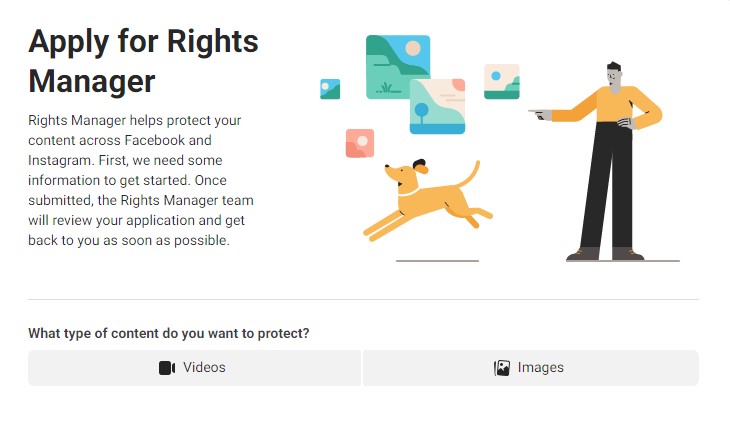On September 21, 2020 Facebook introduced the Facebook Rights Management Tool. This new addition to the Facebook Creator Studio is designed to “help creators and publishers who have a large or growing catalog of content better control when, how and where their content is shared across Facebook and Instagram.” In short, it provides support for Intellectual Property management at scale.
Marketers using user-generated content (UGC) should remain calm and not panic. Let’s dig into what the Facebook Rights Management Tool means for UGC.
The ideal user is larger creators, influencers, and publishers.
The ideal user of the Facebook Rights Management tool is larger creators and publishers, as clearly identified in their press release. The Rights Management tool is part of the creator studio which requires a Facebook Page, rather than a profile, to access. On the Instagram side, this also requires an Instagram business account.
These prerequisites show that this is a tool for brands, including major influencers, that must manage and deploy content at scale. This is not designed for users who are casually sharing photos of their latest meal, hotel stay, or sporting event.
This will likely clarify the line between macro-influencers and micro-influencers.
Bigger doesn’t always mean better. Nano-influencers, people with less than 10,000 followers, are consistently shown to have more clout and drive more engagement than the mega-influencers. These people are the tastemakers, community experts, and social butterflies that connect with their audiences on a deeply personal level.
This is likely (partially) in response to lawsuits about embedding
We’ve written about the potential perils of blind embedding before.
Two high-visibility lawsuits were likely a major driver of this tool, and also possibly a reason it was released in such an early form.
A 2016 lawsuit, settled in 2019, circled around a photo posted to Instagram by Justin Goldman. HIs photo of Tom Brady and Celtics General Manager Danny Ainge spread across social media before it was ultimately embedded into articles written by news outlets. Goldman filed a suit against almost a dozen media outlets claiming that his copyright had been infringed. The suit was settled out of court.
More recently, in mid-2020, Deshaun Watson of the Houston Texans was sued for sharing three images to his Instagram without the photographer’s permission. The suit seeks punitive damages and will likely be in court for years.
Cases like these are settled out of court for fear of establishing case law that could affect all future rulings around social media embedding and copyright.
Reinforces the Importance of UGC Rights Management
The Facebook Rights Management tool doesn’t do away with UGC Rights Management but rather reinforces the case for it. The Facebook tool is designed to protect major creators and publishers, but that still leaves a gap for individuals who recreationally use social media.
Many brands have seen the power of UGC to promote their products and give authenticity to their marketing. That authentic perspective is created by a genuine connection between a brand and its customers.
Before using a user’s content, TINT always recommends a four-step process.
- Ask Permission
- Document and Track Acceptance
- Check for Copyright
- Share the Love
Your customers care about their rights. Help protect them while scaling your content production. Repurposing UGC legally and safely is one of the most effective strategies for converting leads and driving engagement. Don’t slow down because of fear of Facebook Rights Management, GDPR, or CCPA. Learn how TINT helps the world’s top brands discover and obtain rights to beautiful authentic content created by real people.




